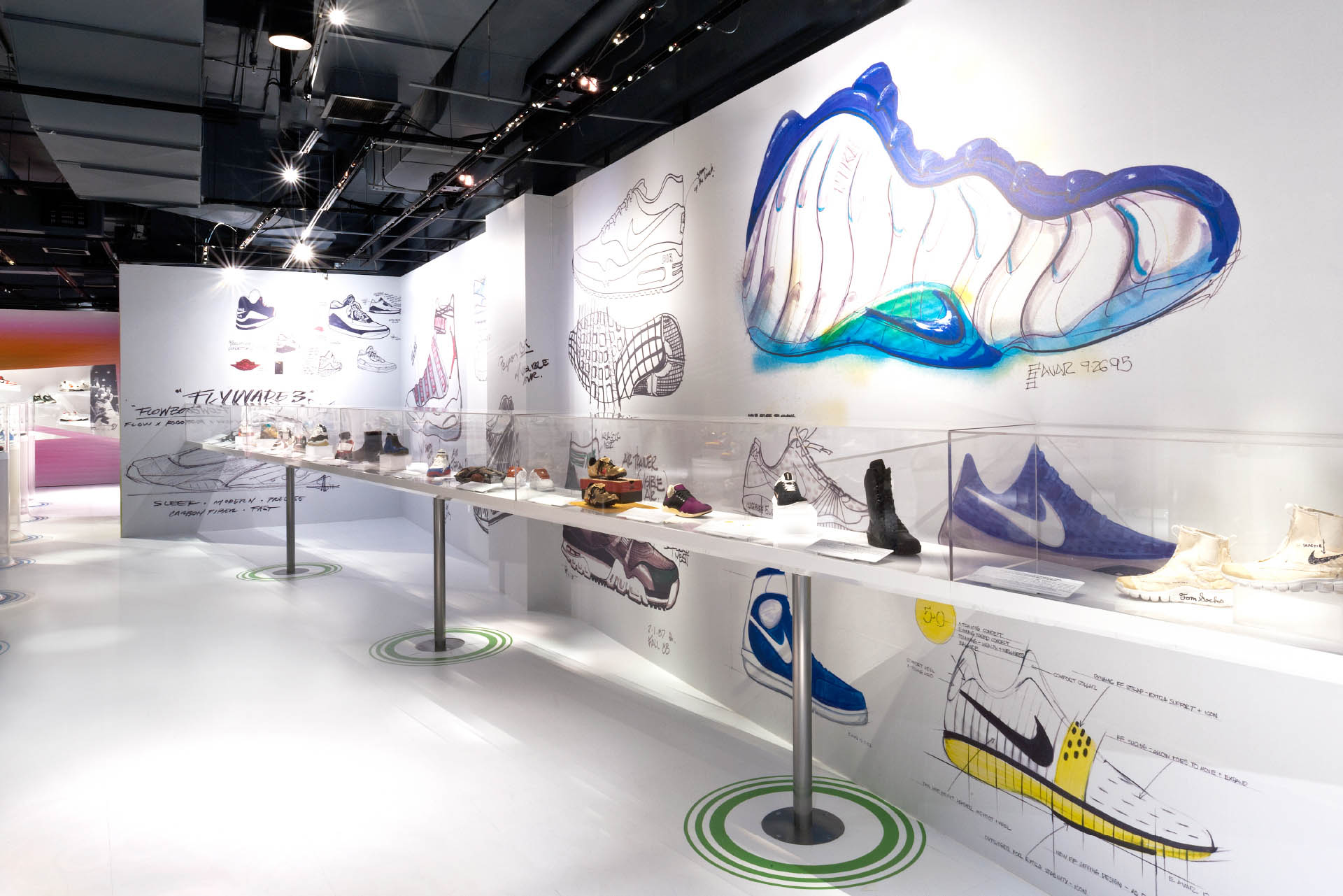Step Through Historical Fashion at the Bata Shoe Museum
Step through historical fashion at the Bata Shoe Museum and set out on a dazzling excursion through the evolution of footwear. From ancient times to the current day, this remarkable institution in Toronto, Canada, grandstands the diverse styles that have embellished feet across cultures and hundreds of years.
Here, you can find the style of Renaissance shoes, the extravagance of Baroque and Rococo heels, and the reasonableness of 19th-century boots. Wonder about the art deco impacts of the Roaring Twenties and investigate iconic mid-20th-century plans.
Further, the museum’s shows dig into the cultural and social contexts of every time, revealing insight into how shoes have formed and reflected historical fashion.
When Is The Bata Shoe Museum Open?
According to their website, The Bata Shoe Museum’s regular opening hours are as per the following:
Monday to Saturday: 10:00 AM – 5:00 PM Sunday: 12:00 PM – 5:00 PM
Kindly note that the museum is shut on the following holidays:
- Canada Day
- Thanksgiving
- National Day for Truth and Reconciliation
- Christmas Day
- Easter Sunday
Make a point to check the museum’s website or contact them straightforwardly for any updates or changes to their working hours prior to planning your visit.
How Is Parking Near the Bata Shoe Museum?
Assuming you plan to visit the Bata Shoe Museum and need parking, here are some options:
- On-Site Parking: The museum does offer a little parking part, however spaces might be restricted.
Street Parking: There may be some street parking accessible nearby, yet focus on parking regulations and time limits. - Public Parking Lots: There are public parking lots and parking garages situated inside strolling distance of the museum, offering additional parking spaces.
- Public Transportation: The museum is effectively accessible by public transportation, including transports and the Toronto tram framework. Taking public vehicle may be a convenient and calm option, especially in the event that you are concerned about parking accessibility.
Given the potential for parking difficulties in occupied regions like midtown Toronto, it’s smart to consider elective transportation options. Further, plan to show up before the expected time, and try to plan ahead to guarantee a smooth visit to the Bata Shoe Museum.
The amount Does Admission Cost at the Bata Shoe Museum?
Here are the admission rates for the Bata Shoe Museum
General Admission:
- Individual: $14
- Senior: $12
- Student (with ID): $8
- Children ages 5-17 (comprehensive): $5
- Children under 5: FREE
- Family Packages:
- Family Package 1: $24 (1 adult and up to 4 children under 18)
- Family Package 2: $35 (2 adults and up to 4 children under 18)
Community Access Partners:
- Admission is FREE for Native visitors, including First Nations, Inuit, and Métis. Identification isn’t needed.
- Admission is also FREE for help laborers accompanying visitors.
General Admission is FREE on Sundays.
They exceptionally urge visitors to purchase tickets in advance to stay away from frustration and stand by times. If it’s not too much trouble, note that admission rates and approaches are liable to change.
Why Is It Called Bata Shoe Museum?
The Bata Shoe Museum is named after Sonja Bata, who was the main impetus behind its foundation. The museum’s collection started from her personal collection of shoes, which she started gathering soon after wedding Thomas J. Bata in 1946. Thomas J. Bata was the top of the Bata Shoe Organization, a conspicuous footwear maker with its beginnings in Zlín, Czech Republic.
The Bata family moved to Toronto during the 1940s to work with the organization’s expansion into North America. As Sonja Bata’s collection of shoes developed to around 1,500 sets by the last part of the 1970s, it became clear that a legitimate space was needed to house and protect these historical artifacts. At the suggestion of a companion and anthropologist, Sonja Bata gave a gift to lay out the Bata Shoe Museum Foundation in 1979.
However having a similar name as the Bata organization, the foundation was legitimately independent and worked as a non-benefit substance. It was principally subsidized from a trust made by the Batas’ personal abundance as opposed to public assets. The foundation’s objective was to support examination into footwear and professionally deal with the developing collection.
With the foundation’s help, the Bata Shoe Museum was formally opened in Toronto in 1995, praising the art, history, and cultural significance of footwear from around the world. The museum remains as a demonstration of Sonja Bata’s passion for gathering and safeguarding the history of shoes and the tradition of the Bata family’s contributions to the shoe business.
What Shoes Are at the Bata Shoe Museum?
The Bata Shoe Museum flaunts an amazing and diverse collection of footwear from different cultures and historical periods. The collection incorporates shoes that range hundreds of years, exhibiting the evolution of footwear and its cultural significance. While the particular shows and shoes in plain view might change after some time, some instances of the sorts of shoes you could find at the museum include:
- Ancient Footwear: Shoes, slippers, and different sorts of footwear worn by ancient civilizations like the Egyptians, Greeks, and Romans.
- Medieval and Renaissance Shoes: Shoes from the Middle Ages and the Renaissance time frame, including pointed poulaines, exquisite boots, and shoes with many-sided plans.
- Baroque and Rococo Shoes: Shoes from the Baroque and Rococo period known for their lavish plans, high heels, and elaborate clasps.
- 19th-century Shoes: Footwear from the 19th century, including boots, siphons, and shoes mirroring the styles of the time.
- Victorian and Edwardian Shoes: Rich shoes from the Victorian and Edwardian periods, showing the fashion of the time.
- Art Deco and Roaring Twenties Shoes: Shoes exhibiting the creative and classy plans of the Art Deco development and the Roaring Twenties.
- Mid-20th Century Shoes: Iconic shoes from the mid-20th century, highlighting stiletto heels, saddle shoes, and shoes.
- Contemporary and Designer Shoes: Present day and high-fashion shoes from famous designers, reflecting latest things and innovations in footwear.
Conclusion
Apart from these classes, the Bata Shoe Museum also includes shoes worn by famous people, competitors, and historical figures. Additionally, the museum often hosts special exhibitions that emphasis on unambiguous subjects or shoe-related topics, adding to the richness and assortment of the shoe collection.
As the museum continually gains new pieces and pivots its shows, there is continuously something new and captivating to find at the Bata Shoe Museum. In any case, kindly look at the museum’s website to track down about the ongoing shows and the particular shoes in plain view during your visit.
How Long Does It Take to Go Through the Bata Shoe Museum?
The time it takes to go through the Bata Shoe Museum can change contingent upon your degree of interest in the displays, your speed, and the size of the crowd during your visit. By and large, visitors normally spend around 1.5 to 2 hours investigating the museum. This permits sufficient opportunity to see the principal shows, read informational shows, and value the diverse collection of footwear from different cultures and historical periods.
Notwithstanding, in the event that you have a particular interest in shoes, fashion history, or you appreciate perusing top to bottom about each showcase, you might carve out yourself spending greater opportunity in the museum. Some visitors could spend as long as 3 hours or more to fully absorb the information and value the different artifacts.
Which Shoe Museum Has the Largest Collection of Footwear?
The Bata Shoe Museum is generally considered to have one of the largest and most broad collections of footwear on the planet. The museum’s collection, which started from Sonja Bata’s personal collection, incorporates north of 13,000 artifacts related to footwear from different cultures and historical periods.
The Bata Shoe Museum’s collection spans thousands of years. Further, they include shoes addressing diverse styles, materials, and craftsmanship from around the globe. Their presentations cover everything from ancient footwear to contemporary and designer shoes. Along these lines, they have a thorough and great showcase of the history and cultural significance of footwear.
Relevant Search:









